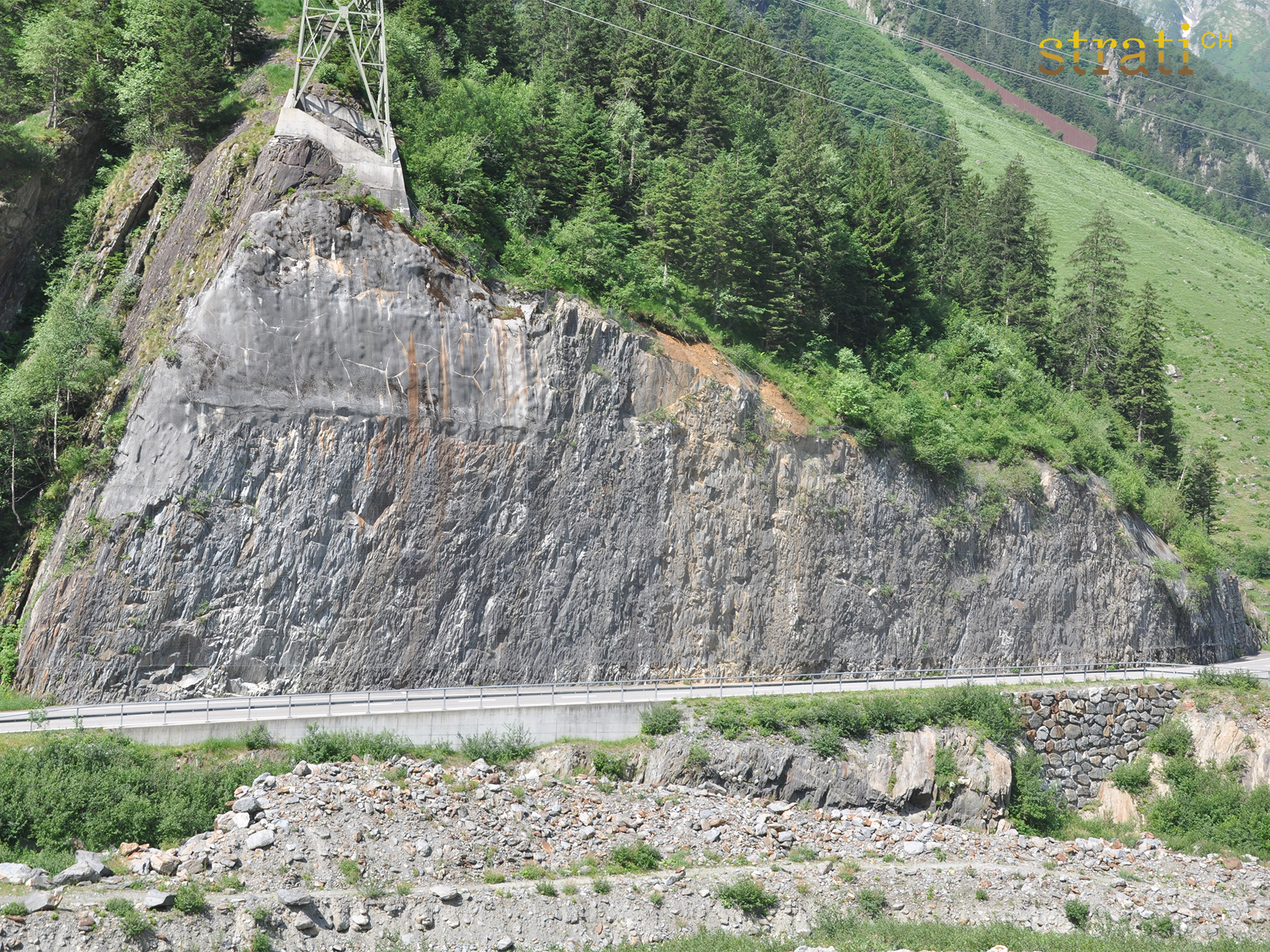Guttannen-Gneiskomplex
Torna a Massiccio dell'AarRappresentazione e statuto
- Index
- G-G
- Colore CMYK
- (0%,16%,16%,2%)
- Colore RGB
- R: 250 G: 190 B: 175
- Rango
- Formazione litostratigrafica
- Uso
- Unità in uso.
- Status
- termine informale
Nomenclatura
- Deutsch
- Guttannen-Gneiskomplex
- Français
- Complexe gneissique de Guttannen
- Italiano
- Complesso gneissico di Guttannen
- English
- Guttannen Gneiss Complex
- Origine del nome
- Varianti storiche
-
Gneiss von Guttannen (Fellenberg & Schmidt 1898), Paragneise der Zone von Guttannen, Guttannen Zone (Abrecht & Schaltegger 1988), Guttannen Gneiss Complex (Berger et al. 2017)
Descrizione
- Descrizione
-
Biotitgneis und Bändergneis, uneinheitlich ausgebildet, oft migmatisch und mit ptygmatischer Verfältelung; aplitische Mobilisate mit dunklen Feldspäten; Biotit-Sericit-Schiefer mit Relikten von Amphibolit und Quarzit.
Età
- Geomorfologia
-
- Paleozoico
- Età alla base
-
- Precambriano
Paleogeografia e tettonica
-
- Basamento policiclico ante-varisco dell'Elvetico
- Paleogeografia
- placca continentale europea
- Termini generici
Referenze
- Revisione
-
(2017) :
Geological Map of the Aar Massif, Tavetsch and Gotthard Nappes. Geological Special Map 1:100'000, Explanatory Notes 129
p.28: The Guttannen Gneiss Complex best represents the typical rock associations of the Ferden-Guttannen Zone. Biotite-chlorite and chlorite-sericite schists dominate in the “Guttannen Zone” of ABRECHT & SCHALTEGGER (1988), called here the Guttannen Gneiss Complex. These greenschist-facies mineral assemblages overprint higher-grade parageneses (e.g., sericite after sillimanite). Towards the southern border of the gneiss complex, the retrograde alteration gradually diminishes and the original migmatitic character appears (ABRECHT 1994).

